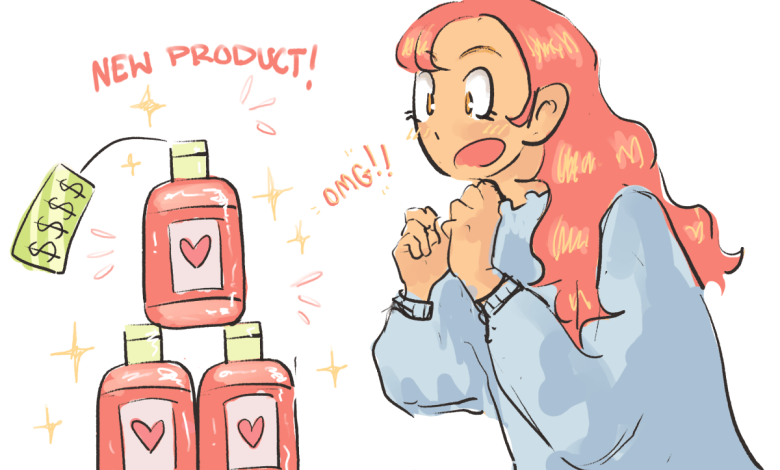Why the sweetness business is a rip-off


Despite our desire to prioritize personality and virtues over appearance and visual complexion, the beauty industry often highlights the opposite. The beauty industry alone takes up to $528.6 billion, showing that demographics of all ages and genders use more makeup and skincare than before. New trends and products are launched at beauty retail stores, like Sephora and Ulta Beauty, and people become obsessed with them. An average American woman spends $1,700 a year on makeup, skincare and hair-care products already, and it is bound to increase each year. Plus, the price of beauty products is expected to increase due to inflation. However, things have been getting out of hand, as I noticed that my favorite shampoo, which used to cost $21, became $32 after the pandemic. Many people are complaining about how even drugstore foundations are over $20. Unfortunately, the price will keep increasing along with the sales. People will continue to invest in beauty products without thinking about the impact it will have on their bank accounts. We know the prices are getting absurd and unreasonable, but why do we keep falling for these beauty industry schemes, and what are their negative effects?
Blame your favorite beauty brands, influencers and the easily swayed human mind for it. Companies will keep coming out with ‘new’ and ‘innovative’ products when, in most cases, their previous products serve the same purpose. It’s not just a simple lipstick anymore; there are lip oils, lip stains, colored lip balm, a mix of lip oil and lip stain and much more. Makeup routines all over TikTok and Instagram are getting more complex, and that is not a coincidence. Often marketed to purchase numerous products known as a ‘lip combo,’ influencers will try to get you into a habit of applying three to four lip products to achieve that perfection.
Skincare and haircare influencers and brands are also adding extra steps and fixed routines all over the internet. Having a 10-step skincare routine or adding all that extra hair mousse and oils can be fun, but when it comes to its effectiveness, there are a lot of questions to ask. Do we really need to apply all those anti-aging serums or a $600 Dyson air wrap? We should know that all the supplementary products we see on social media are exaggerations that influencers themselves find hard to follow every single day. Their job is to promote and expose us to new, unfamiliar products as much as possible. Most of the products are not spent out of their own pockets but are from PR packages. Comparing your own makeup collection and routine to an influencer’s is like comparing a stroll to the park to a professional marathon race.
Not many people are aware of the problem of overconsumption and the amount of waste produced afterward. All the plastic packaging from beauty products will decompose after decades, and only 9% of plastic gets recycled each year. Nothing is more wasteful than purchasing more products than needed and throwing away the barely touched products. Choose environmentally friendly packaging and resist the temptation to purchase unnecessary beauty products.
There is nothing wrong with spending money on what you genuinely want and enjoy, including beauty products. However, it is important to be aware of marketing tactics and not be easily influenced when it comes to financial and health purposes. Nobody needs drawers full of makeup and skincare, and the price for a glow-up does not necessarily mean spending thousands of dollars every year. Make sure to do your research when committing to a purchase and try to prevent overconsumption for the sake of your wallet and the environment.




